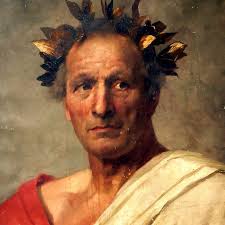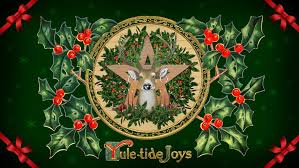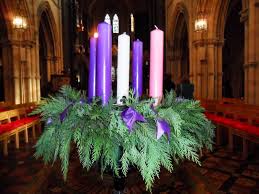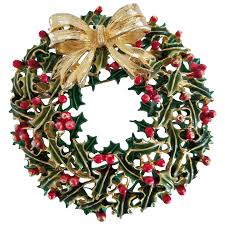
Roundy green thing
On my door,
Decked with ribbons,
Bows and more.
The scent of pine
From woven leaf,
My lovely, festive,
Christmas wreath.

Wreaths are decorative displays that can be found in homes and businesses throughout the year; however, for many, wreaths are a seasonal decoration, and the holiday most often connected with wreaths is Christmas. Although they have become a holiday tradition, many do not know the long history and assorted meanings associated with wreaths.
The word wreath comes from the word writhen that was an old English word meaning “to writhe” or “to twist”. It is believed that wreaths date back to the Persian Empire, ancient Egypt, ancient Greece, and the Roman Empire. The idea of hanging wreaths was not necessarily done as a home décor idea. Wreaths were often hung on doors as a sign of victory and/ or to signify status in society. Julius Caesar often wore a twisted laurel wreath as a symbol of his importance; but, many believe he was also a little vain and wore them because he was going bald!

Christmas wreaths are also connected with the pagan holiday of Yule which was celebrated by ancient Germanic and Scandinavian peoples. Yule marked the onset of the winter solstice and was a 12-day festival held in honor of the returning sun and the seasonal cycle. Wreaths of greens or straw often contained a five pointed star in the center and were prominent decorations during the celebration.

Perhaps the most well-known use of wreaths comes in connection with Christmas and with Christianity. The circular shape of the wreath is said to symbolize eternity and the unending love of God. In the late 16th century, the use of wreaths during Yule was adopted by Christians and became a custom in the form of an Advent wreath. An Advent wreath was traditionally made of evergreen branches, holly, and red berries. Each of those parts had a significant meaning of its own. The evergreen branches stood for eternal life…ever green. The red berries and the thorny leaves of the holly represented the crown of thorns worn by Christ and His blood shed while wearing it. An Advent wreath was meant to hold 4 candles: 3 purple and one rose. The candles stand for hope, peace, joy (rose), and love, and are placed in the wreath one at a time, one each of the four Sundays that run up to Christmas. Sometimes a fifth candle, which is white, is added to the center. It represents Christ and is lit on Christmas Eve.

For many people, Christmas wreaths are not meant to be religious symbols. Today a wreath hanging on a door, a municipal light pole, or on your Christmas tree may be inviting the spirit of Christmas into your community or home along with good luck.
For those of us who collect antique and vintage Christmas, wreaths come in many sizes and are made of many different materials. Communities often hung very large wreaths on downtown light poles or on buildings. Some communities still do that today, although, because of cost, we are seeing less and less of these municipal decorations in the center of towns.
You might find wreaths on vintage cards and wrapping paper.


Some ladies might wear a wreath brooch.

There are also lighted wreaths for use in the window, on the wall, or at the top of your tree.




Wreaths come in all sizes, from the very large for hanging over the mantle to very small for hanging on your Christmas tree.



The variety is almost endless and each wreath is a reminder of traditions, colors, lights, and the joy of the Christmas holiday.
